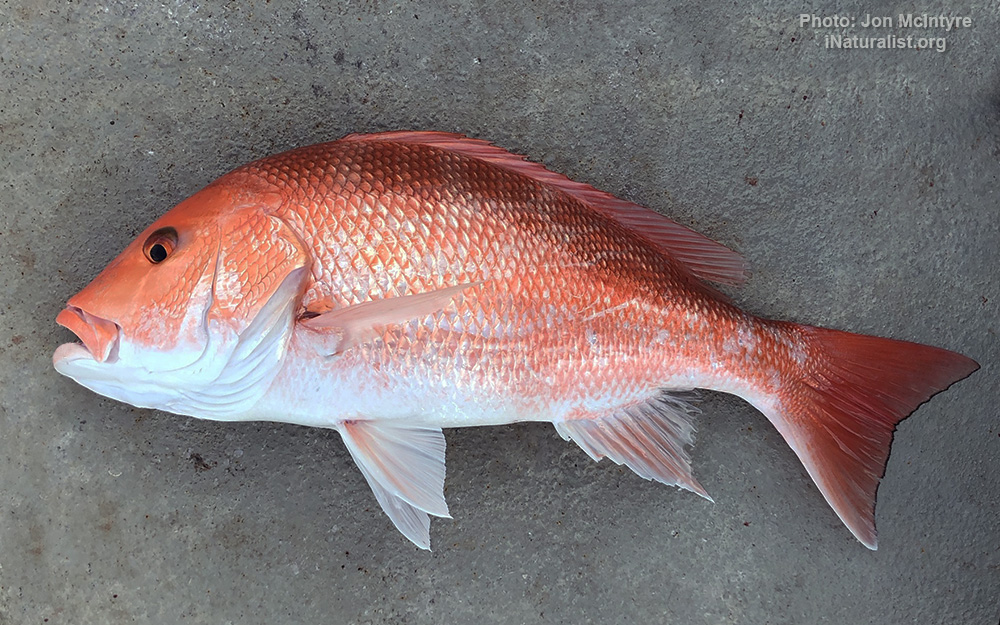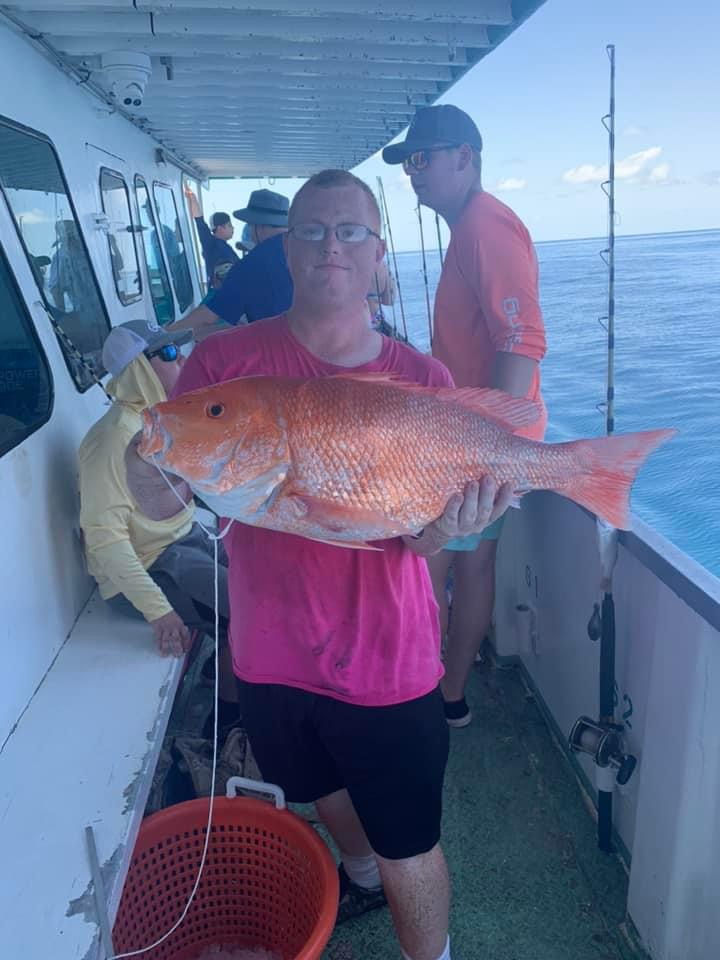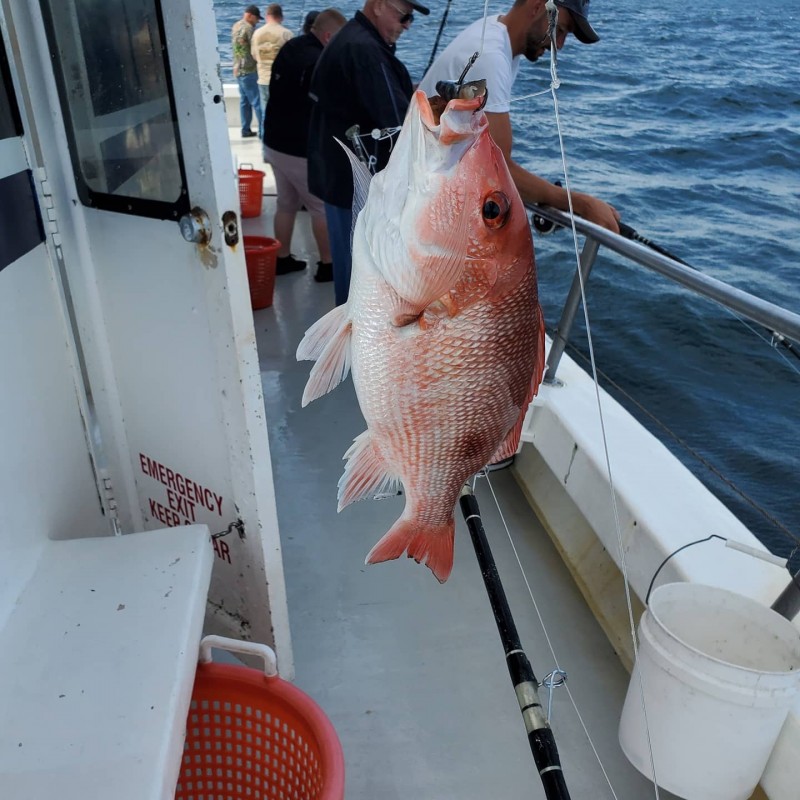Northern red snapper
(Lutjanus campechanus)

Classification
General data
The northern red snapper (Lutjanus campechanus) is a species of marine ray-finned fish, a snapper belonging to the family Lutjanidae. It is native to the western Atlantic Ocean, the Caribbean Sea, and the Gulf of Mexico, where it inhabits environments associated with reefs. This species is commercially important and is also sought-after as a game fish.
Characteristics
The northern red snapper is similar in shape to other snappers, such as the mangrove snapper, mutton snapper, lane snapper, and dog snapper. All feature a sloped profile, medium-to-large scales, a spiny dorsal fin, and a laterally compressed body. Northern red snapper have short, sharp, needle-like teeth, but they lack the prominent upper canine teeth found on the mutton, dog, and mangrove snappers. They are rather large and are red in color.
This snapper reaches maturity at a length of about 39 cm (15 in). The common adult length is 60 cm (24 in) but may reach 100 cm (39 in). The maximum published weight is 50 lb, 4 oz (22.79 kg) and the oldest reported age is 100+ years. The coloration of the northern red snapper is light red, with more intense pigment on the back. It has 10 dorsal spines, 14 soft dorsal rays, three anal spines, and eight to 9 anal soft rays. Juvenile fish (shorter than 30–35 cm) can also have a dark spot on their sides, below the anterior soft dorsal rays, which fades with age.
This species commonly inhabits waters from 9–60 m (30–200 ft) but can be caught as deep as 90 m (300 ft) on occasion. They stay relatively close to the bottom and inhabit rocky bottoms, ledges, ridges, and artificial reefs, including offshore oil rigs and shipwrecks. Like most other snappers, northern red snappers are gregarious and form large schools around wrecks and reefs. These schools are usually made up of fish of very similar size.
The preferred habitat of this species changes as it grows and matures due to the increased need for cover and changing food habits. Newly hatched red snapper spread out over large areas of open benthic habitat, then move to low-relief habitats, such as oyster beds. As they near one year of age, they move to intermediate-relief habitats as the previous year\\\'s fish move on to high-relief reefs with room for more individuals. Around artificial reefs such as oil platforms, smaller fish spend time in the upper part of the water column while more mature (and larger) adults live in deeper areas. These larger fish do not allow smaller individuals to share this territory. The largest red snapper spread out over open habitats, as well as reefs.













